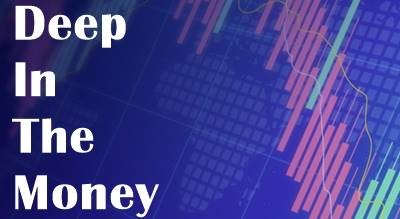
Table of Contents
What is Broad Money?
The amount of money in circulation in a particular Economy is broad money. It is described as the most thorough method of analysing a country's money supply, considering both Narrow Money and other assets that can be swiftly converted into cash for the purchase of goods and services.

According to the Reserve Bank of India (RBI), M3 and M4 are India's two types of broad money. Broad money encompasses fewer liquid deposits, such as bank time deposits and other significant financial institutions. It includes deposit certificates, foreign currencies, money market accounts, marketable securities, and treasury bills.
M3 Broad Money Formula
The formula to calculate broad money is as follows:
Broad Money (M3) = M1 + Time deposits with the banking system
where,
M1 = Currency with public + Demand deposits with the Banking system (Savings Account, current account)
M3 Broad Money Liabilities
All central bank liabilities to financial companies and other sectors would be included in a broad definition of the monetary base, excluding central government holdings of central bank liabilities other than currency.
The national currency, non-transferable savings deposits, term deposits, securities other than shares, and certificates of deposits are a few examples of the liabilities.
Talk to our investment specialist
Components of M3 Broad Money
The components of M3 are as follow:
- Cash
- Current Deposits
- Savings Deposits
- Certificates of Deposits
- Other' Deposits with RBI
- Term Deposits with a maturity of less than a year
- Term Deposits with a maturity of more than a year
- Call/ term borrowings from non-Depository financial institutions
Importance of M3 Broad Money
Increasing the total amount of money in circulation has inherent importance in the money supply:
- When there is more money available, the economy accelerates because businesses have better access to Capital
- If less money is in circulation, the economy slows, and prices may decrease or become constant
- Broad money is considered one of the indications to determine what actions they can take to influence the economy
- It helps policymakers comprehend future inflationary tendencies
- Central banks often think of both broad and narrow money when making monetary policy decisions
- Economists believe that the money supply, Inflation, and interest rates are all related. Central banks, such as the RBI, use lower interest rates to boost the money supply when they want to stimulate the economy
M3 Money Supply in India
M3 contains M2 plus long-term time deposits in banks in India. As of May 2022, India's Money Supply M3 fell to 208092.04 INR billion from 208171.19 INR billion in April. From 1951 to 2022, India's Money Supply M3 averaged 25739.28 INR Billion, with a top in April 2022 and a low in October 1952.
According to Trading Economics Global Macro models and analysts, India's M3 money supply will likely reach 196000.00 INR billion by the end of this quarter. According to the econometric models, the India Money Supply M3 is expected to trend around 175000.00 INR Billion in 2023.
The Bottom Line
The RBI utilises the broad money measure to analyse the money supply in the economy and adjust its monetary policy to control macroeconomic characteristics, including inflation, consumption, growth, and liquidity over medium and long periods. The approach for calculating money supply differs with the country. Still, broad money is always the most comprehensive, covering all highly liquid assets, currency, and chequable deposits, as well as somewhat more Illiquid types of capital.
All efforts have been made to ensure the information provided here is accurate. However, no guarantees are made regarding correctness of data. Please verify with scheme information document before making any investment.












